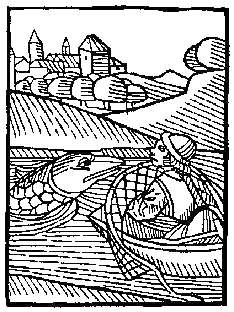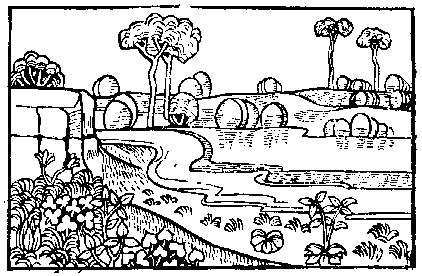| Caversham in the last millennium | |
|
The oldest written reference to Caversham is in Domesday. The spelling there is 'Cavesha', but at least seventeen different spellings have been recorded since. Various suggestions for the meaning of the name have been put forward, including calves' meadow, the home or enclosure of a person called Cafhere, or a wooded hollow. According to Domesday Caversham, including the Mill which was valued at 20 shillings, was held by Suain, a Saxon freeholder. Under William the Conqueror everybody had to place themselves under the overlordship of someone else – Suain’s lord was Walter Giffard, and the land stayed within the Giffard family for several generations. |
|
 |
One of Walter Giffard’s descendants was the powerful baron the Earl of Pembroke, known as William the Marshal. Renowned as a pious and honourable man, William held several estates but it was to his Manor at Caversham that he chose to return to die at the age of 82. The Earl of Pembroke had five sons who each succeeded him in turn, but all died without issue and Caversham reverted to another branch of the Giffard family. An inquest into the estate in 1307 mentions two water mills and another mill ‘let to farm’, and the payment of passage money for a ferry at Lower Caversham. |
In 1477 Edward IV took possession of the estate when the owner, George, Duke of Clarence, drowned in a butt of Malmsey following a charge of treason. He obviously didn’t look after it as by 1493 Caversham Lodge, as the Manor was then known, was falling into a state of disrepair, and Henry VII leased much of the estate to the abbey at Notley in Buckinghamshire for £20 per year. The land included two water mills, (one grain, one fulling), a mill-barge, a lock, a ferry passage and the ‘weres and waters wyth thyer bankys and dammys doune from the foresayd loke unto the sayd mylles and beneth as yt stretcheth wyth the ffysshing’. Mill Green would certainly have been included. This land reverted to the crown on the dissolution of the monasteries, then was rented to a gentleman, Francis Knollys in 1542 for £28 per year – by this time there appear to have been two flour mills and two fulling mills. His son became the Earl of Banbury who entertained Elizabeth I and Anne of Denmark (wife of James I) at the manor house. The Earl of Craven occupied Caversham Manor by the time of Charles I, and in 1647 the king was brought there to see some of his children for the last time before his execution. In 1718 the estate was bought by Earl Cadogan who built a new mansion house. That house burned down in the 19th century and the owners, the Crawshay family, moved into Dean’s Farm while it was rebuilt as the Caversham Park we know today.
It cannot be certain that the corn mill mentioned in Domesday stood on the site of the Caversham Mill that survived until well into this century, but the creation of a mill channel and pool are major undertakings. The Thames does not flow fast enough to turn a wheel effectively without the added power from a weir, so perhaps all the mills mentioned were located nearby. Nowhere else in Caversham has been suggested as a mill site. Neither is the precise location of the original manor house known. Most historians believe that Caversham grew up around a ford across the Thames which was probably close to Caversham Bridge. However the fact that Caversham seems to have developed in two distinct centres suggests that there may have been a second ford near here, which could have linked the Abbey with Caversham Manor. Documents from 1603 mention ‘le Clopper’ or ‘le Clapper’, which means bridge or stream crossing – the wooden footbridge that became the Clappers may have been constructed close to a previous ford. It is known that the original manor house was nearer the river than the present Caversham Park, and may have been where Dean’s Farm stands today. Originally called Caversham Farm, the original farmhouse dated back at least to the 15th century. It was not unusual for manor houses to be downgraded to farmhouses as their owners built new and grander properties elsewhere. Nor was it unusual for a manor house to be located separately from its ‘park’, which was used for hunting and might only contain a lodge for the convenience of hunting parties. Dean’s Farm was certainly once an important property – the remains of a channel from the river leading to a dock behind the farm can still be seen today. If the manor was at Dean’s Farm, Mill Green would have been a well-used thoroughfare to the mill and the Clappers beyond, but by Tudor times the site of the main house had probably already moved closer to its present site.
|
|
| Previous | |

|
|


